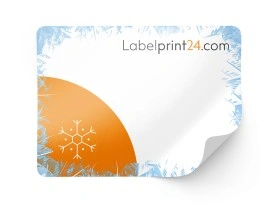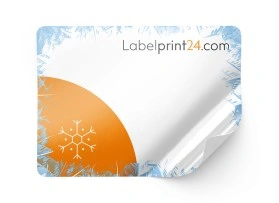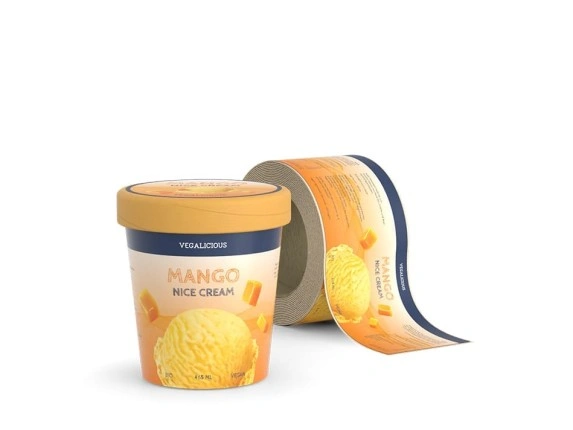- Products
- Service & Help
 Our printing experts will be happy to help you with any questions you may have about your order. Simply use our customer support.SupportNewsletter
Our printing experts will be happy to help you with any questions you may have about your order. Simply use our customer support.SupportNewsletter - About us
 Our printing experts will be happy to help you with any questions you may have about your order. Simply use our customer support.SupportNewsletter
Our printing experts will be happy to help you with any questions you may have about your order. Simply use our customer support.SupportNewsletter - Contact us
- Key Clients
Labels for frozen goods
Are you looking for reliable Freezer labels for your frozen foods? A cold-resistant Label that securely labels your pharmaceutical products? Order Freezer labels from Labelprint24.com!
- As Thermal transfer, Paper or PP Film label
- Cold, grease and moisture resistant down to -40 °C
- Finishing with foil, laminate and warning triangle
Here you can find our unprinted labels for frozen food from Labelprint24.com!
- Production TimeFrom 48hr
- MaterialFilm / Paper
- Size100% customizable
- Finish OptionsFilm / Varnish
Select kind of product

White paper, matte, permanent, freezer-safe
- Online-Designer

White PP film, glossy, permanent, freezer-safe
- Online-Designer

Product Advisor for Labels
Whether it’s a simple roll label or a multi-layered specialty label – I’m your go-to person for questions concerning materials, adhesion, and finishing of labels for the pharmaceutical, cosmetic, food, chemical, and almost any other industry.
"Paper or film? We've got the perfect label!"
I will be happy to help you personally.
Freezer labels
Frozen food labels are an easy and efficient way to organise and label your food. With a variety of sizes, colours and designs, you can identify your frozen products quickly and easily. Labels suitable for frozen foods or even refrigerated medicines contain relevant information about the product such as the expiry date, nutritional information or ingredients. A picture or the manufacturer's logo can also be printed on the label. Thanks to the waterproof materials, the paper or film labels remain legible even during longer storage and stick firmly in place.
Deep-freeze labels for frozen food need special properties
Like all other foods, frozen products such as meat, fish, vegetables, baked goods and ready meals must be labelled in accordance with the European Food Information Regulation. If there is no more room on the outer packaging for the many prescribed pieces of food safety information or if they are only applied shortly before the deep-freezing process, food labels such as thermal labels, product labels or barcode labels take over this task and show the consumer the price, weight, best-before dates, etc.
To ensure that frozen goods remain permanently labelled, deep-freeze labels are required. These have a special adhesive that withstands the cold temperatures. The inks used on printed freezer labels are also cold-resistant. At Labelprint24 you can get printed and unprinted freezer labels from a quantity of 10 pieces.
The printed labels are made of either paper or polypropylene film and can withstand temperatures as low as - 40 °C. The unprinted labels are thermal transfer labels that you can print yourself with thermal transfer ribbons. These are also resistant to temperatures down to - 40 °C.
What requirements must deep-freeze labels meet?
A frozen product always has a certain amount of moisture on its surface. The biggest challenge for a label is to adhere reliably to this surface. Even if the product is thawed and the surface rime melts into water, the label must stick.
Furthermore, the legibility of the print is important. Frozen goods can be kept for months. The print must neither fade nor smear. These two challenges make it clear that standard solutions are out of the question for frozen products. Frozen labels are a separate product group that was developed precisely for this purpose.
This is especially true for labels with temperature indicator function, which indicate with a colour change whether the cold chain has been interrupted. Although they are enthusiastically accepted by customers, indicator labels have not yet become widely accepted. They are currently found mainly on refrigerated medicines.
This is also understandable, as compliance with the cold chain determines the effectiveness (or even toxicity) of the medicine. For food, the indicator labels that provide information on compliance with the cold chain are not yet in widespread use.
Some traders are still resisting the mandatory use of these indicators. They fear being held liable for errors outside their own responsibility. Ultimately, however, it is to be expected that these
What ingredients should freezer labels have?
The ingredients of freezer labels are crucial to whether the product serves its purpose or not. So be sure to look for the following criteria when buying:
- they should be waterproof so that they do not fade or stain.
- the freezer labels should also be cold-resistant so that they do not break or tear.
- the freezer labels should also be oil-resistant so that they do not stick or smear.
The problem is liability:
Normal food labels do not adhere securely to frozen products. When the temperature changes due to blast freezing or sudden thawing, normal food labels, adhesive labels or adhesive roll labels no longer adhere reliably to the printed packaging and can fall off.
But there is a solution to this problem: the freezer label. This label is made from freezer label paper or polyethylene film for food and with suitable inks. But the most important component of freezer labels is the special adhesive.
Deep-freeze labels - Adhesives for extreme cold
This special adhesive for deep-freeze labels is frost-resistant and can be used in various versions down to minus 20, minus 40 degrees Celsius or under even colder conditions. These extreme cold conditions are found less in the food industry, however, but rather in the storage of samples in the pharmaceutical sector or in medicine. Normal label adhesives become brittle at cold temperatures and lose their adhesion. The basis of deep-freeze adhesives is formed by polymers and additives suitable for foodstuffs, which ensure a good feel at very low temperatures. Low-migration hot melt adhesives are also used for cold labels. They are characterised by the best adhesion and processing properties at low temperatures.
Labels for frozen products must not only be resistant to cold, but also to moisture. Since condensation or dew water can always occur and food packaging including food labels sometimes also must be washed off. Resistance of deep-freeze labels to fats is also desirable, e.g., for confectionery and bakery products. Deep-freeze labels with window coatings facilitate the subsequent printing of the best-before date, price and quantity information.
Importance of laboratory labels for laboratory work
Laboratory labels are labels used in laboratories to identify different types of vessels, bottles and other items, such as containers for tissue samples. They are usually made of plastic or occasionally paper and contain information such as the name of the contents, the quantity, the date of manufacture and the expiry date. They may also contain warnings about how to handle the contents. Laboratory labels are an important part of laboratory work as they help to ensure the safety and protection of staff.
What are freezer labels?
The American Clarence Birdseye developed the first shock freezer in 1924. He took the ingenious idea from the Eskimos during a trip to Greenland in 1920. They threw their catch of fish into the icy wind - the fish froze in just a few seconds. This way they always had a fresh supply of fish for the whole winter. Frozen products are becoming increasingly popular not only in the home kitchen, but also in the catering industry and in communal catering, because deep freezing is the best preservation method for optimally preserving the freshness and high nutritional content of food over a longer period.
In which industries and for which products are freezer labels used?
Labels for freezers are used for goods for which two conditions apply:
- Rapid change in composition and ingredients at normal temperature.
- Long shelf life when kept at the specified refrigeration temperature.
The frozen products often have a high content of proteins. These tend to quickly become susceptible to the colonisation and spread of bacteria at normal temperatures. The growth of mould is also possible. This process is irreversible, which is why it is so important to maintain the cold chain.
Medicines that require cooling of 2 to 8 degrees Celsius are particularly critical. These include vaccines. But blood reserves or plasma donations must also be stored and transported at suitably low temperatures.
In the case of preparations requiring refrigeration, each has its own storage temperature. This has a certain tolerance range of a few degrees, but the temperature must not leave this range.
Foods such as ice cream or sorbets that are enjoyed frozen change their product properties when thawed. Therefore, for example, you cannot defrost ice cream and make it edible again by freezing it. For other products, refreezing is less critical. These include many vegetables such as cabbage, peas or beans. However, the instructions for use should always be followed to avoid any risk. Other foods, such as frozen mushrooms, should never be refrozen once they have been thawed. Changes in the proteins can make the mushrooms inedible or even poisonous.
Delivering deep-sea fish fresh to the customer
A special challenge in the frozen food industry is the handling of freshly caught deep-sea fish. Today, pollock, cod and cod are processed directly on the catching ships and immediately deep-frozen. This is necessary so that the ships do not head for their home port until they have fully utilised their loading capacity.
Since fish spoils particularly quickly, it is necessary to preserve it immediately by freezing. On very large and powerful trawlers, not only filleting and freezing, but also packaging of the fish products takes place directly on the ship. At this point at the latest, the product must be labelled accordingly. This shows how important and indispensable clear, tamper-proof and permanent labelling of frozen products is. Without these markers, many products would not be marketable at all.
Freezer labels from Labelprint24
In our online shop we offer you a wide range of different freezer labels. Whether you need a single label or a roll with thousands of labels, we have the right solution for you.
With our freezer labels made of paper or polypropylene film, you can mark your products professionally and easily. Order your desired deep-freeze labels from us today and benefit from our many years of experience as a label manufacturer! Depending on customer requirements, our freezer labels are printed in your individual design or left white for the thermal transfer printer.
For our deep-freeze labels, we use the deep-freeze adhesive - a standard adhesive can also withstand temperatures down to -20 °C, but "deep-freezing" is about temperatures down to -40 °C. Standard glue would become brittle at these temperatures and lose its adhesive strength. To prevent this, there is the special deep-freeze adhesive. It guarantees consistent adhesion down to -40 °C and sticks at temperatures of up to +80 °C.
You too can benefit from the high quality of our deep-freeze labels and the many advantages our products offer:
- Fast production and short delivery times
- Intuitive product configurator
- Attractive price-performance ratio
- Download cutting dies
- First class print quality
- Easy personalisation, individual formats ...
and a personal, individual and professional customer service.
More blog articles on the topic of food labels:
- Food labels- new information on the European Food Information Regulation
Also, on our website you can find information, further details on food labels, migration and penalties for improper labelling and EU directives in the food labels section.
FAQ
- Why is maintaining the cold chain so important?
When protein-containing products reach the dew point, an ideal climate is created on which bacteria and moulds can spread. This process is irreversible. Once thawed, a frozen product is no longer safe. If it is not certain when the product stopped being frozen, it can only be disposed of. Refreezing would temporarily stop the spread of harmful bacteria. However, the damage caused remains.
- Why are indicator freezer labels not yet in use across the board and across all sectors?
The frozen food chain begins with initial processing and ends in the freezer in the supermarket. In between, a frozen product passes through many stations. From initial processing, for example on the ocean-going trawler, to the supermarket, the product changes hands and with it the responsibility for its safe storage. The traders fear complaints for omissions for which they are not responsible. That is why they are currently still resisting the widespread introduction of indicator labels. For some particularly critical products, such as medicines, this procedure is already being used successfully.
- Are RFID tags available for frozen products?
RFID tags are so-called "radio chips". They absorb the energy of a radio wave and respond to it on the same frequency. RFID chips are extremely practical for wholesalers. They provide information about packaging date, content and quantity. So far, however, they have only been used for wholesale packaging such as containers or boxes. RFID chips are still too expensive for use on each individual frozen package. However, in the medical sector, such as in the transport and handling of vaccines, frozen RFID tags are already being used. They are therefore an important contribution to product safety.
- How sustainable are freezer labels?
Deep-freeze labels take up only a particularly small part of a package. They do not disrupt the raw material cycle and maintain the sustainability of environmentally friendly packaging. However, the focus of deep-freeze labels is on their security and legibility. They are therefore not developed with sustainability in mind but ensure the reliable storage of the product. Freezer labels thus make their own contribution in terms of sustainability.
Your B2B supplier for packaging - all from one provider




